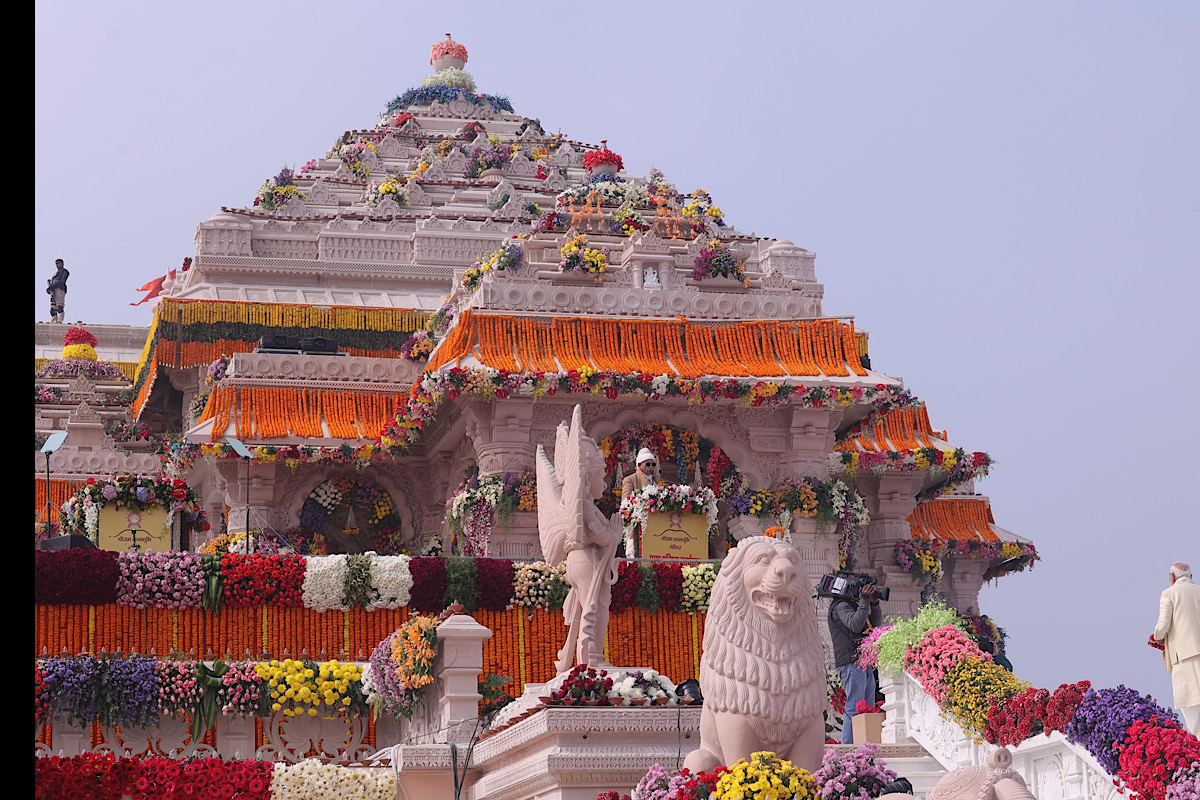Rahul 2.0
As India gears up for another round of elections, the political landscape seems to be undergoing a subtle yet significant shift.
Today’s Narendra, Prime Minister Modi, has successfully showcased India’s nationhood through the tenets of ‘Ram Rajya.’ Lord Rama is compassionate, unifying and progressive.

Live telecast of Ram Lalla's aarti from Ayodhya
Narendra, who later became globally famous as Swami Vivekananda, introduced Hinduism to the World’s Parliament of Religions on 11 September 1893 in Chicago, USA. He presented Hinduism as a religion of tolerance, advocating an end to fascism. He introduced Hinduism as the most ancient order of monks globally, labeling it the Mother of all religions, with billions of adherents from various classes and sects since the start of civilization.
For the first time, he proposed a Hindu religion advocating universal tolerance, acknowledging all religions as true. He presented this as a religion that allows faith holders to question it and seek answers. He became a pivotal figure in introducing Hinduism to the West, credited with elevating the profile of Hinduism to a global label among other religions. Today’s Narendra, Prime Minister Modi, has successfully showcased India’s nationhood through the tenets of ‘Ram Rajya.’ Lord Rama is compassionate, unifying and progressive. He resides in the hearts of both friends and adversaries, leaving a profound impact on everyone’s thoughts.
He is in every house and in every courtyard. Lord Rama gives hope to millions. He is an embodiment of inclusion and has emerged as a pivotal catalyst for India’s shared legacy with several countries. Recognizing the country’s ancient and rich heritage, the Prime Minister has highlighted Bharat’s legacy, dating back 7000–8000 years, through building the Rama Temple at Ayodhya and inaugurating it on January 22. Lord Rama instills universal values in the hearts of every Indian, and there is great joy in almost every home in the country. There is a mood of festivity and celebration all around. Lord Rama’s life story has resonated not just in the common man’s home in India but globally, from Washington to New York, Paris, London, and Sydney.
Advertisement
Almost all Indians, from all religious sects, applaud the Prime Minister for the inauguration of the Rama Temple on January 22, and for envisioning Ayodhya as a modern-day Vatican City. This date holds significance, and parallels the importance of August 15, which marks India’s freedom from British rule. In the 21st century, it is important to internationalize Lord Rama’s life as a guiding principle, adopting it universally. In Indonesia, leaders have a small box with figurines of characters from the Ramayana, and former US President Barack Obama carries a statue of Lord Hanuman in his pocket. A Muslim-majority country like Indonesia finds Lord Rama and Ramayana in their celebrations.
A contemporary understanding of Lord Rama’s life will enable world leaders to resolve conflicts through peace rather than war. Lord Rama manifests values that are universally accepted, and embodying such values will ensure collaboration to solve world challenges without conflicts. Following this, today’s Narendra advocates to world leaders that this is not an era of war, and emphasises peace as the ultimate and only pathway for solving conflict. Ram Rajya is inclusive of all faiths. “Ram Rajya” tenets are based on democracy, where the voice of every citizen is heard, and justice is delivered.
In Ram Rajya, one keeps one’s head high, fights for justice, treats everybody equally, defends the weak, and focuses on doing one’s duty. The Narendra of today offers tenets of Ram Rajya to global leaders for conflict resolution, setting a stage for India as the “Vishwa Guru.”
(The writer is former Chairman, EAC (Industry- 2), Ministry of Environment, Forest & Climate Change, Govt. of India. He can be reached at jpglobalconsultinggroup@gmail.com)
Advertisement